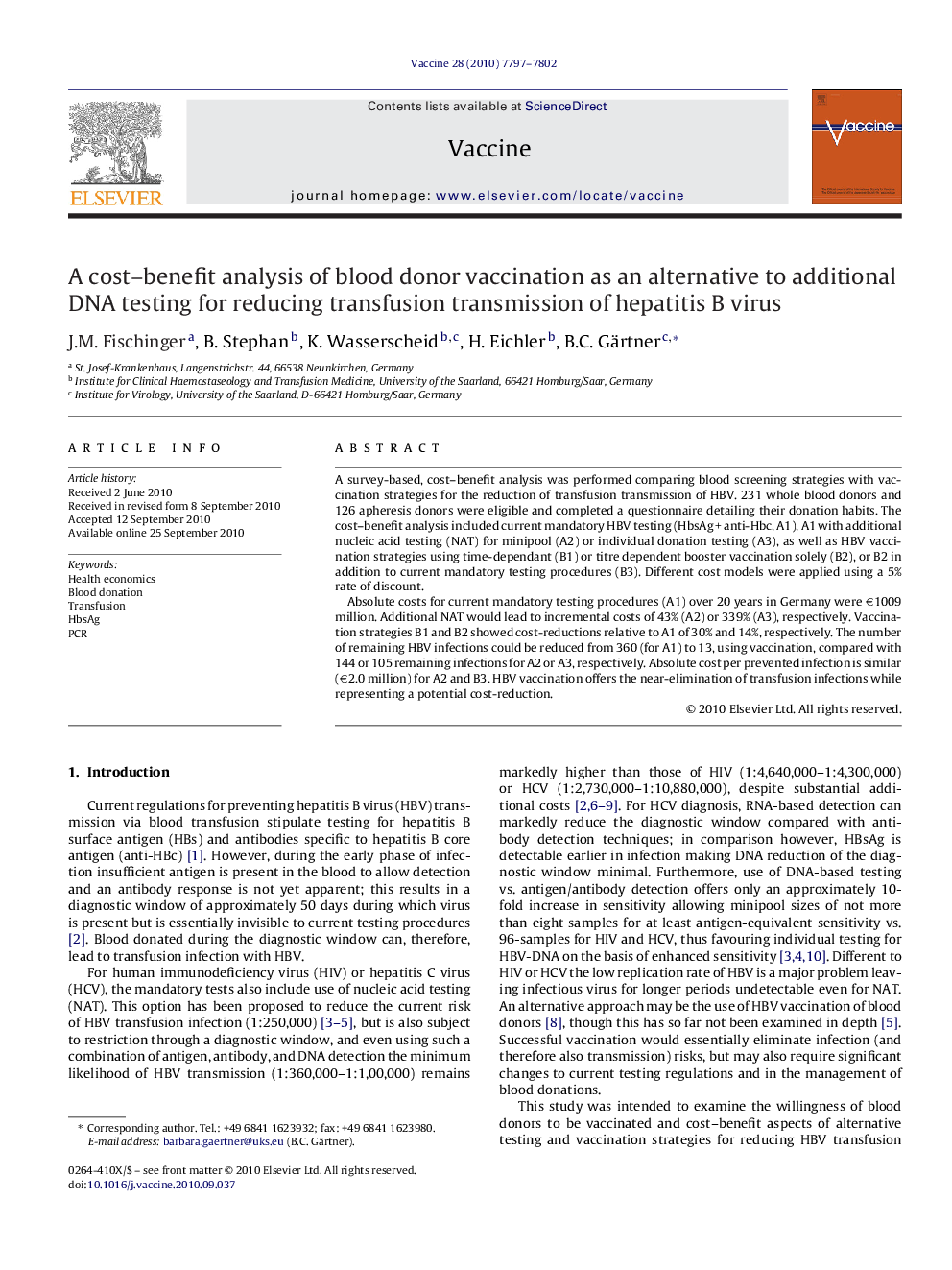| Article ID | Journal | Published Year | Pages | File Type |
|---|---|---|---|---|
| 2404611 | Vaccine | 2010 | 6 Pages |
A survey-based, cost–benefit analysis was performed comparing blood screening strategies with vaccination strategies for the reduction of transfusion transmission of HBV. 231 whole blood donors and 126 apheresis donors were eligible and completed a questionnaire detailing their donation habits. The cost–benefit analysis included current mandatory HBV testing (HbsAg + anti-Hbc, A1), A1 with additional nucleic acid testing (NAT) for minipool (A2) or individual donation testing (A3), as well as HBV vaccination strategies using time-dependant (B1) or titre dependent booster vaccination solely (B2), or B2 in addition to current mandatory testing procedures (B3). Different cost models were applied using a 5% rate of discount.Absolute costs for current mandatory testing procedures (A1) over 20 years in Germany were €1009 million. Additional NAT would lead to incremental costs of 43% (A2) or 339% (A3), respectively. Vaccination strategies B1 and B2 showed cost-reductions relative to A1 of 30% and 14%, respectively. The number of remaining HBV infections could be reduced from 360 (for A1) to 13, using vaccination, compared with 144 or 105 remaining infections for A2 or A3, respectively. Absolute cost per prevented infection is similar (€2.0 million) for A2 and B3. HBV vaccination offers the near-elimination of transfusion infections while representing a potential cost-reduction.
